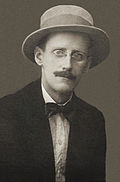Wikipedia:Main Page history/2019 June 16
From today's featured articleGallimimus was a theropod dinosaur that lived in what is now Mongolia about 70 million years ago, during the Late Cretaceous. The genus is part of the ostrich dinosaur group of feather-bearing, fast runners. Its head was small and light with large eyes and a bulbous structure at the base of the skull. The snout was longer, broader and more rounded than in similar species. Its horny beak was toothless with a delicate lower jaw. The neck and legs were long, and the weak forelimbs had short three-fingered hands. Several of its fossils were discovered in the Gobi Desert in the 1960s. Gallimimus means "chicken mimic", from the shape of its neck vertebrae. It may have had good vision and intelligence comparable to ratite birds, living in groups as an omnivore, a filter-feeder or a herbivore. Gallimimus was featured in the film Jurassic Park in a scene that included innovative special effects and shaped the popular view of these dinosaurs as bird-like animals. (Full article...)
Recently featured:
Did you know...
|
In the news
On this day
John Cheke (b. 1514) · Helen Traubel (b. 1899) · Helmut Kohl (d. 2017) |
Today's featured picture

|
Barbara McClintock (June 16, 1902 – September 2, 1992) was an American scientist and one of the world's most distinguished cytogeneticists. After receiving her PhD in botany from Cornell University in 1927, McClintock began studying chromosomes and how they change during reproduction in maize. She developed the technique for visualizing maize chromosomes and used microscopic analysis to demonstrate many fundamental genetic ideas. One of these was the notion of genetic recombination by crossing over during meiosis – a mechanism by which chromosomes exchange information. McClintock produced the first genetic map for maize, linking regions of the chromosome to physical traits. She also demonstrated the role of the telomere and the centromere, regions of the chromosome that are important in the conservation of genetic information. Recognized as among the best in the field, she received the 1983 Nobel Prize in Physiology or Medicine. This 1947 photograph, in the collection of the Smithsonian Institution Archives, shows McClintock in her laboratory at the Cold Spring Harbor Laboratory in Laurel Hollow, New York. Photograph credit: Science Service, Smithsonian Institution; restored by Adam Cuerden
Recently featured:
|
Other areas of Wikipedia
- Community portal – Bulletin board, projects, resources and activities covering a wide range of Wikipedia areas.
- Help desk – Ask questions about using Wikipedia.
- Local embassy – For Wikipedia-related communication in languages other than English.
- Reference desk – Serving as virtual librarians, Wikipedia volunteers tackle your questions on a wide range of subjects.
- Site news – Announcements, updates, articles and press releases on Wikipedia and the Wikimedia Foundation.
- Village pump – For discussions about Wikipedia itself, including areas for technical issues and policies.
Wikipedia's sister projects
Wikipedia is hosted by the Wikimedia Foundation, a non-profit organization that also hosts a range of other projects:
Free media repository
Wiki software development
Wikimedia project coordination
Free textbooks and manuals
Free knowledge base
Free-content news
Collection of quotations
Free-content library
Directory of species
Free learning materials and activities
Free travel guide
Dictionary and thesaurus




